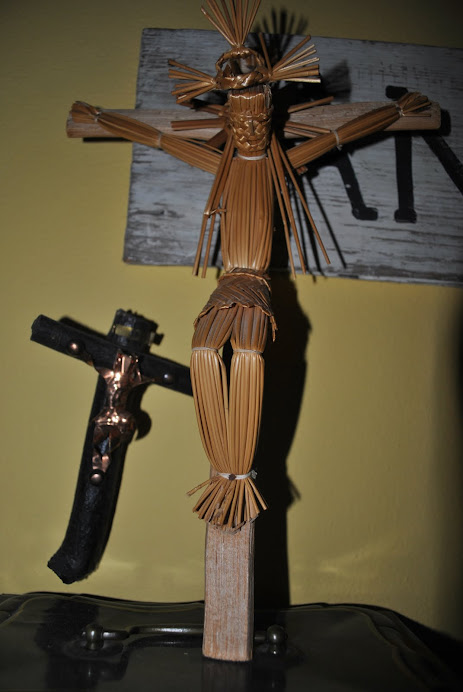“How much” I asked the elderly woman standing nearby as I reverently eyed the 18-inch-tall statue, running my fingers over the intricately carved robe the statue wore.
“Oh, it’s not for sale,” she said. I looked up at her, disappointed, wondering why the statue would be on display if it were not for sale. “It can’t be sold because it’s been blessed by a priest. You can give me a donation for her.”
Being Catholic, I was familiar with the practice of not selling items that were blessed. If you sell them, the blessing does not remain with the item. Being ignorant of the value of such a statue, I offered the woman a $20 donation, thinking that was a fair price. She accepted. I should have offered 10 times that amount.
After some research, I discovered the statue is an excellent Spanish colonial hand-carved example of the Black Madonna
I’ve since seen similar statues of the Black Madonna selling for thousands of dollars. But my statue has an honored place in my home amongst a growing collection of saint statues known as santos or bultos.
After acquiring my Black Madonna, I became fascinated by these beautiful pieces of art. Some in my collection are newer folk art
Like many of my collectibles, I began picking them up for a song before they became highly collectible. Today, I couldn’t afford to purchase my collection.
My collection includes various saints including an Infant of Prague with real human hair, carved wooden Simon and Peter
I love the simple painted folk art wood pieces made in Guatemala
My greatest find, however, is a collection of 15 6-inch wax saints with cloth dress, cotton hair and beards, many accompanied by the saints’ relics. They were most likely made in Germany where wax dolls such as these are common in nativity scenes. I’ve never seen another set of saint dolls. I donated $85 for the set.
In South America, residents will create home altars
Catholics are known for their love of great devotional art, i.e., the Sistine Chapel
That love of art carried over into the home with collections of saints and devotional wall art that included elaborately carved Black Forest
I’ve been lucky enough to have acquired quite a few pieces of devotional art, which gives me double pleasure for its beauty and spirituality.
Remembering the Infant of Prague
I didn’t realize these were a hot collectible until I saw them displayed in Country Living magazine. I thought I was the only one attracted to these statues from the ‘50s and ‘60s.
It just goes to show, there’s a collector for everything.







